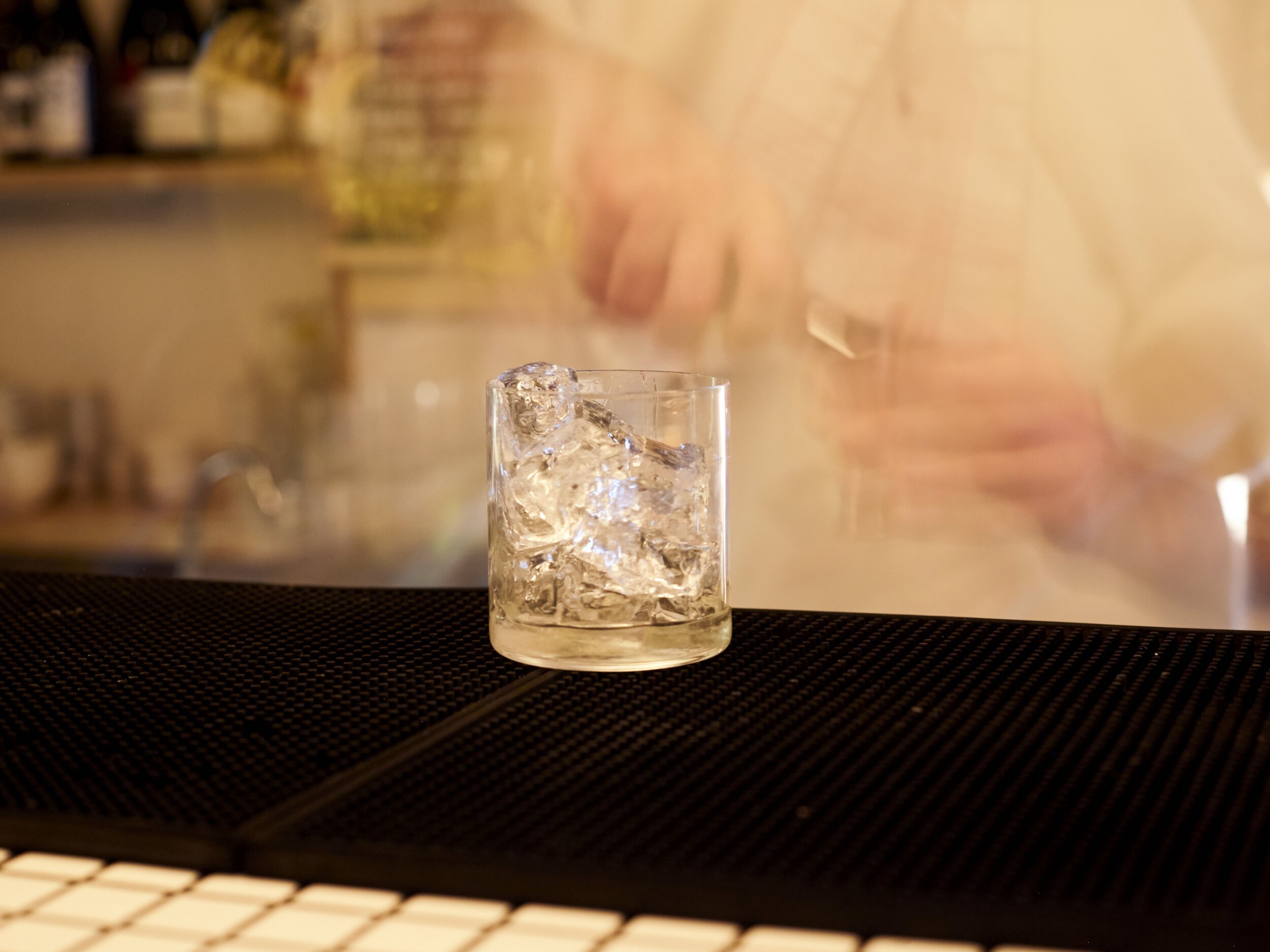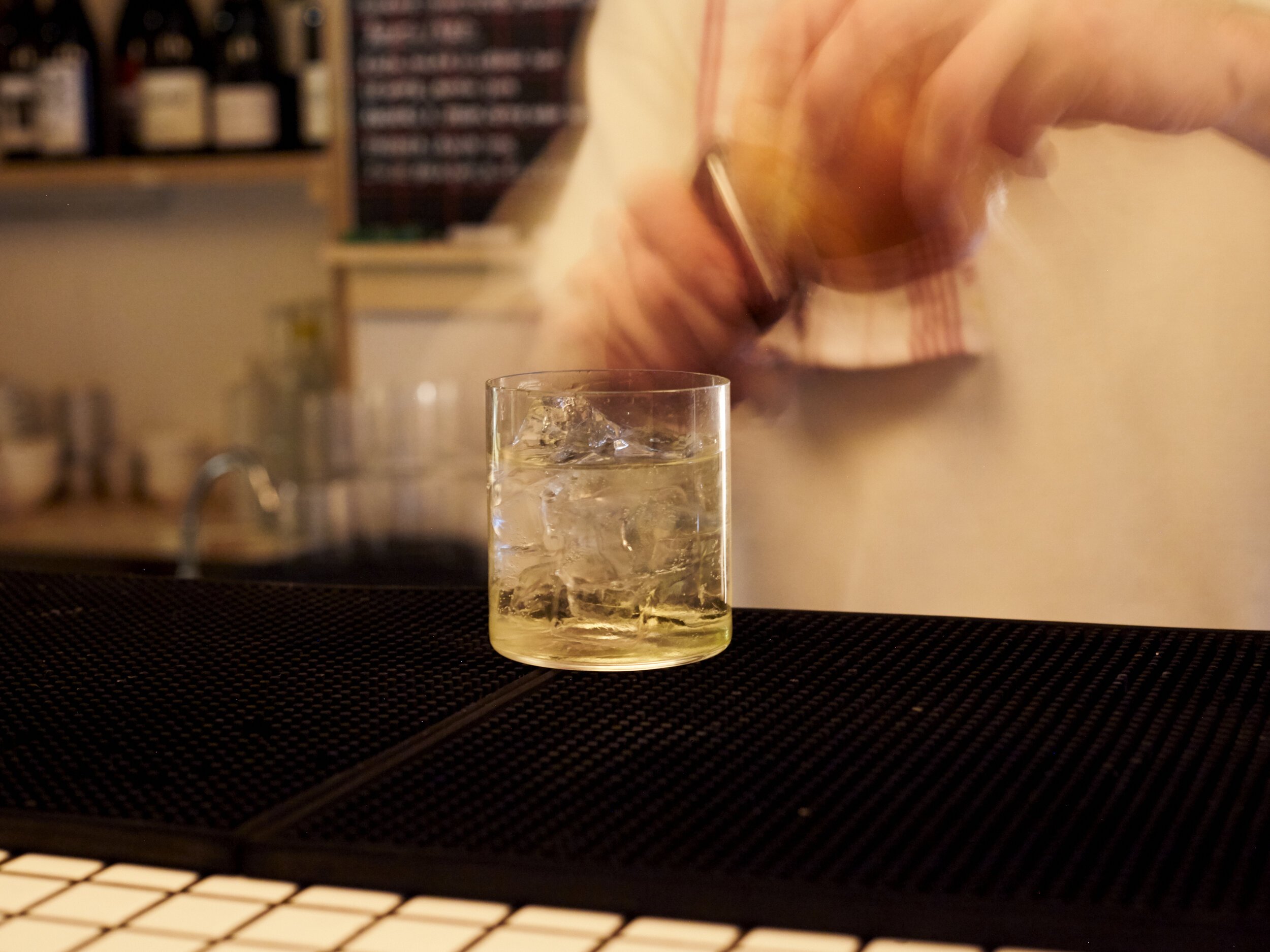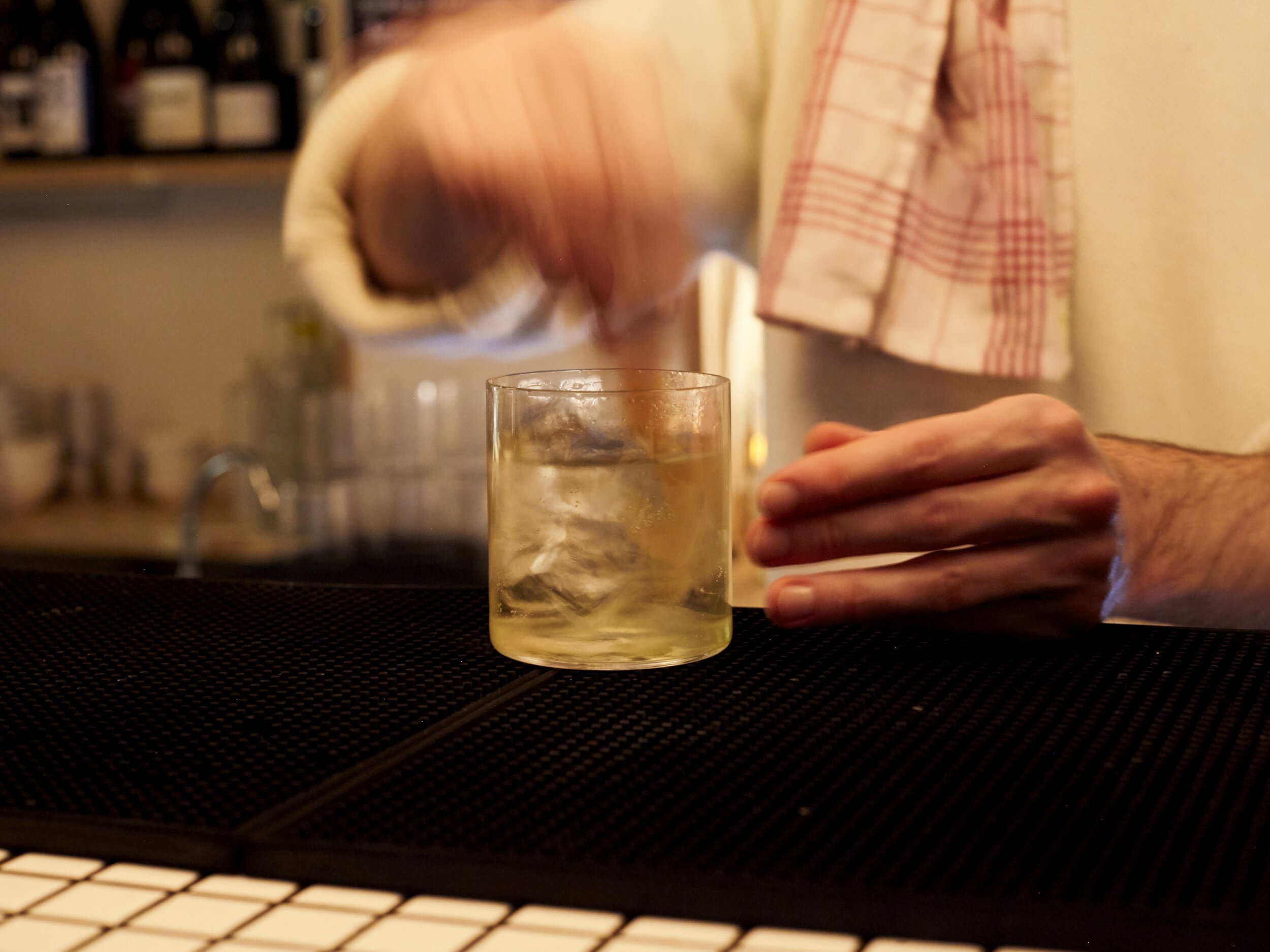Anatomy of a mixed drink ∖ ⊍⊌⊎
Useful notes on something that applies to putting together any cocktail or drink to dazzle (could equally apply to making wine or beer-making for instance, although that isn’t done in a ‘live’ environment as in a bartender mixing a drink on-the-spot at the bar).
Think of any such drink to draw delight from as needing three parts: the base, the body and the perfume.
~ BASE ~
The main component of any drink - will add depth and structure by usually being something higher in ABV. Your base will also determine how you approach choosing the components for the rest of your drink. Common place selections here are light and dark (aged) spirits: vodka, gin, rums, tequilas and mezcals, brandy, whisk(e)y. These are all concentrated distillations of grapes, grains, canes and cactus that carry those subtle flavours and lend that framework to build out from. The only difference being dark spirits will have been slightly aged to lend colour whereas clear spirits are pure distillations. Whilst in early folklore it was frowned upon to create ‘cut-bases’ by mixing two or three of these elements together to create something new as a base, it is something that we practice a lot.
~ BODY ~
Aka - the modifier. Now we want to add something lighter and more intense in flavour to modify that base, pulling it to something sweet, bitter, tart etc and to lend a ‘mouthfeel’ (the impact of the drink on the palette) to your creation. What’s important here is to not overpower the base as that is still the determining ingredient and to do so would lead to something overly sweet or rough to taste, say. Think refinement. Think to add consistency, weight or texture; either through a light juice, syrup, vermouth or aromatised wine or cream; or get creative and mix up your modifiers.
~ PERFUME ~
The part that affects the nose - so important in how we think about taste. This is your finishing dazzle to add something to excite the palette before the drink even hits your lips. Typically this would be applied towards the end and would be smallest component of the drink. It could be a fruit garnish, a nut, coffee, herbal liqueurs, a flavour in your syrup or a few drops of bitters (house favourite). Essentially it’s the garnish and underlines why this element is hugely important. Your garnish can be discreet and built into the drink (as in bitters of a subtle flavour to the syrup you’re using) or something more obvious such as a briney olive or lemon zest placed on top of your glass. Again you can bring sweet, savoury or bitter to compliment the rest of the drink and provide that critical balance to your final serve.
3 classic examples:
~
Old Fashioned
Base - Whisk(e)y
Body - sugar or syrup
Perfume - bitters + zest of orange and lemon (we also muddle in a Bourbon Cherry)
The Negroni
Base - Gin
Body - sweet vermouth
Perfume - Campari (we use an alternative)
Margarita
Base - Tequilla
Body - Lime juice
Perfume - Triple Sec (and salt rim)





